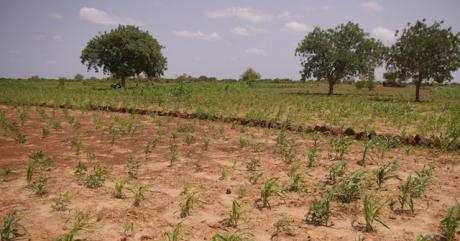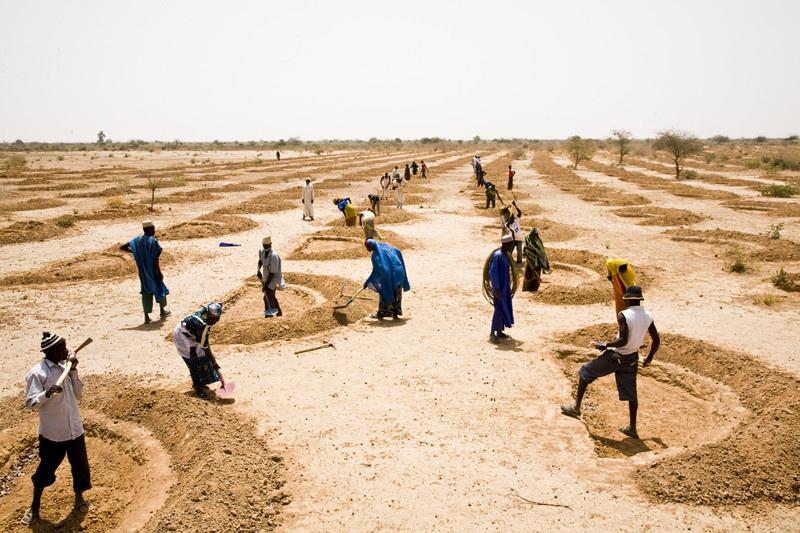Desertification in the Sahel – an untruthful story?
The area of the Sahel has long been depicted as a disaster area with one of the highest poverty levels in the world. This portrayal has been closely related to the notion of desertification; “an image of the advancing desert” where humans have been proclaimed as the culprit due to their unsustainable management of land. Desertification has gained a strong foothold as a type of development narrative however this assumption is the result of weak research and has been proven not to be accurate in all parts of the Sahel. Still these particular narratives have been the ones that have gained ground because they have been fashioned by powerful actors. The development narrative of desertification with its set of ideas about the environment has informed many decisions made by national governments, scientists and international donor organisations for many years, which have led to top-down approaches in land management and imbalances in power structures. Over time this has resulted in unsustainable land management practices that have been disadvantageous to the people living from this land.
 Innovative farmer in front of his field of half moons in Burkina Faso. Photo credit: Anneli Sundin CC BY-NC-ND
Innovative farmer in front of his field of half moons in Burkina Faso. Photo credit: Anneli Sundin CC BY-NC-ND
During the last two decades extensive studies based on satellite images, researchers have discovered an increase in greenness over large parts of the Sahel since the mid-80s. This is linked to a recorded increase in rainfall and is believed to represent the recovery of the landscape from the persistent droughts in the 70s and 80s. What research also shows is that while rainfall does cause a greenness to occur, there are specific ‘hot spots’ in the Sahel where the greening cannot be explained by rainfall alone. This means that land management practices might also have played a role. Since evidence has indicated that the Sahara desert is not encroaching further south to the same extent that had been assumed, counter-narratives have gained an increased foothold. These counter-narratives discuss the importance of local indigenous knowledge and customary institutional management of land and highlight farmers own adaptability to climate uncertainty and dynamic ecosystems.
Sustainable agricultural techniques
In the arid and semi-arid parts of West Africa traditional soil and water conservation techniques have been developed and promoted thanks to their beneficial effects on degraded and/or arid lands and on agricultural production. These techniques include zaï (planting pits), stone lines (contour rock bunds/ contour earthen bunds), half-moons, grass strips, as well as FMNR (Farmer Managed Natural Regeneration) and tree plantations. In Burkina Faso the debate about recent greening trends is linked to the techniques such as zaï and stone lines and in Niger FMNR is the prominent method seen as contributing to vegetation increases. Zaï are excavated 15-20 cm deep holes, filled with organic matter, that attract termites which process the substrate and increase the organic matter content of soils and enhance water infiltration. The holes subsequently hold water for a longer period of time resulting in crops surviving dry spells. In the Yatenga province of Burkina Faso, farmers who used the zaï managed to increase their yields from nearly nothing to 300-400 kilograms per hectare in a year with low rainfall and 1500 kilograms in a good year. Stone lines slow down rain water and prevent soil erosion, and are often combined with zaï. The method of half-moons originates from Niger and involves making half-moon shaped holes, usually shallower than the zaï. Grass strips and hedges consist often of drought resistant plants and are used to reduce erosion as well as to contain livestock.
 (Combined agricultural techniques in Burkina Faso: zaï and stone lines. Photo credit: Hanna Sinare) CC BY-NC-ND
(Combined agricultural techniques in Burkina Faso: zaï and stone lines. Photo credit: Hanna Sinare) CC BY-NC-ND
In Niger, the adoption of FMNR is regarded as a success story. By systematic pruning and nursing of new shoots and stems emerging from tree stubs farmers can assist in the natural regeneration of trees. FMNR also results in an increase in other produce, such as fruits, firewood and fodder for livestock.
The adoption of the above mentioned techniques have been positive in several areas in the Sahel, thanks to the many development projects carried out as well as them being low-cost and easily accessible. Farmers themselves have also played a key role in disseminating them through farmer-to-farmer visits, workshops, market days and so called ‘zaï schools’.
The future – a sustainable pathway?
In the 1980s no one thought that these improved traditional agricultural techniques would have such an impact resulting in a greener landscape. However, further research is necessary to understand if what seems to be a greening trend actually will contribute to a long-term livelihood improvement on the ground. Many researchers and development organisations depict these techniques and the increases in yield and vegetation as success stories. Yet, is this really a “transformation in the making”, where local people’s capacity to deal with climate uncertainty substantially have improved? Very recent fine-scale studies show how some parts of these green ‘hot spots’ in fact have a decline of woody vegetation. So, if a new extensive drought would arrive, are the steps taken sufficient to secure people’s livelihoods, or rather a sign of a maladaptive development trajectory?
Biography
Anneli Sundin is currently undertaking her M.Sc. thesis at Stockholm Resilience Centre, exploring how the spread of these specific techniques relates to the re-greening trend. She is part of the larger research project at the Centre called “Adapting to climate change in drylands: the re-greening in Sahel as a potential success case”.
